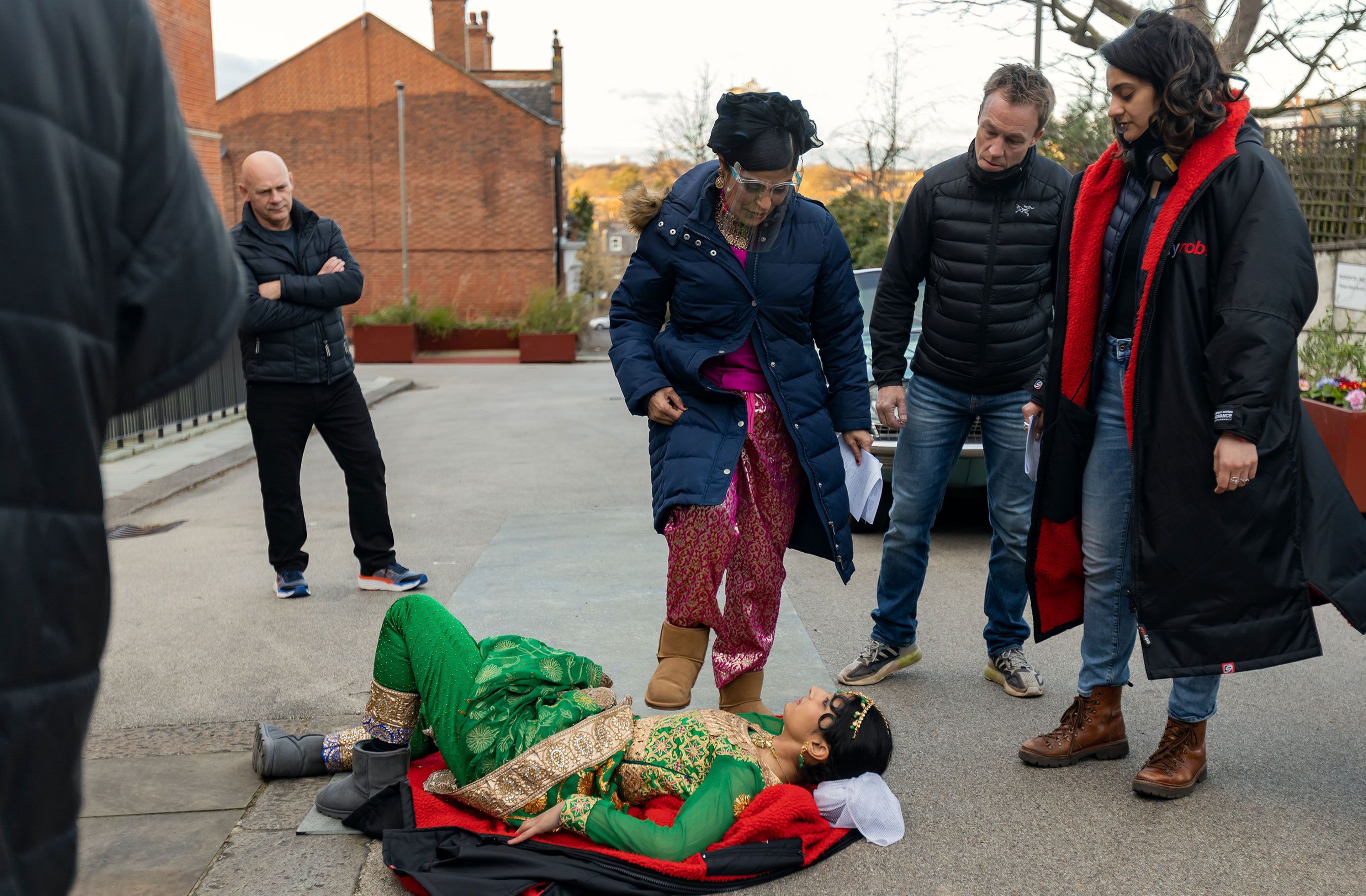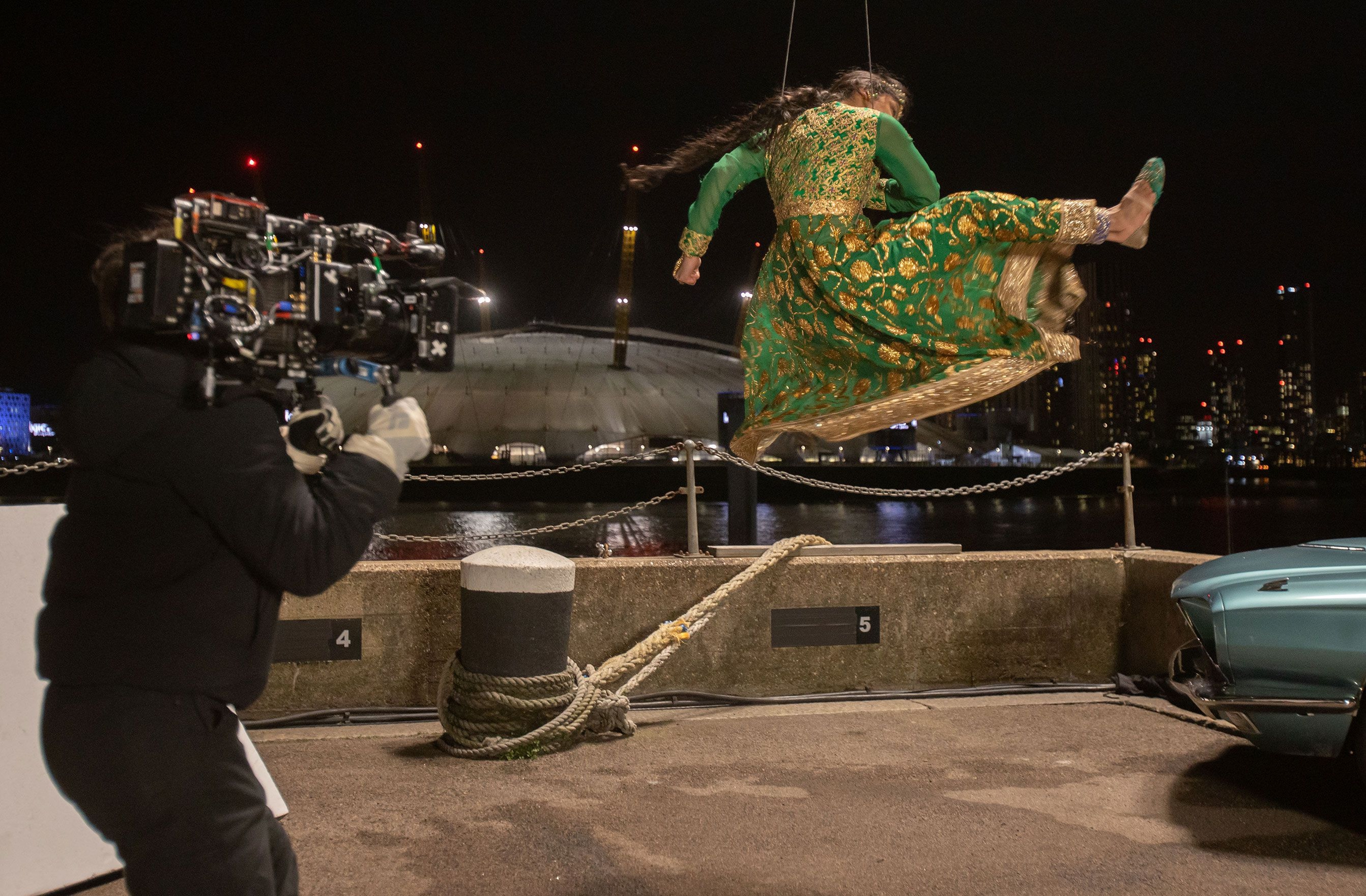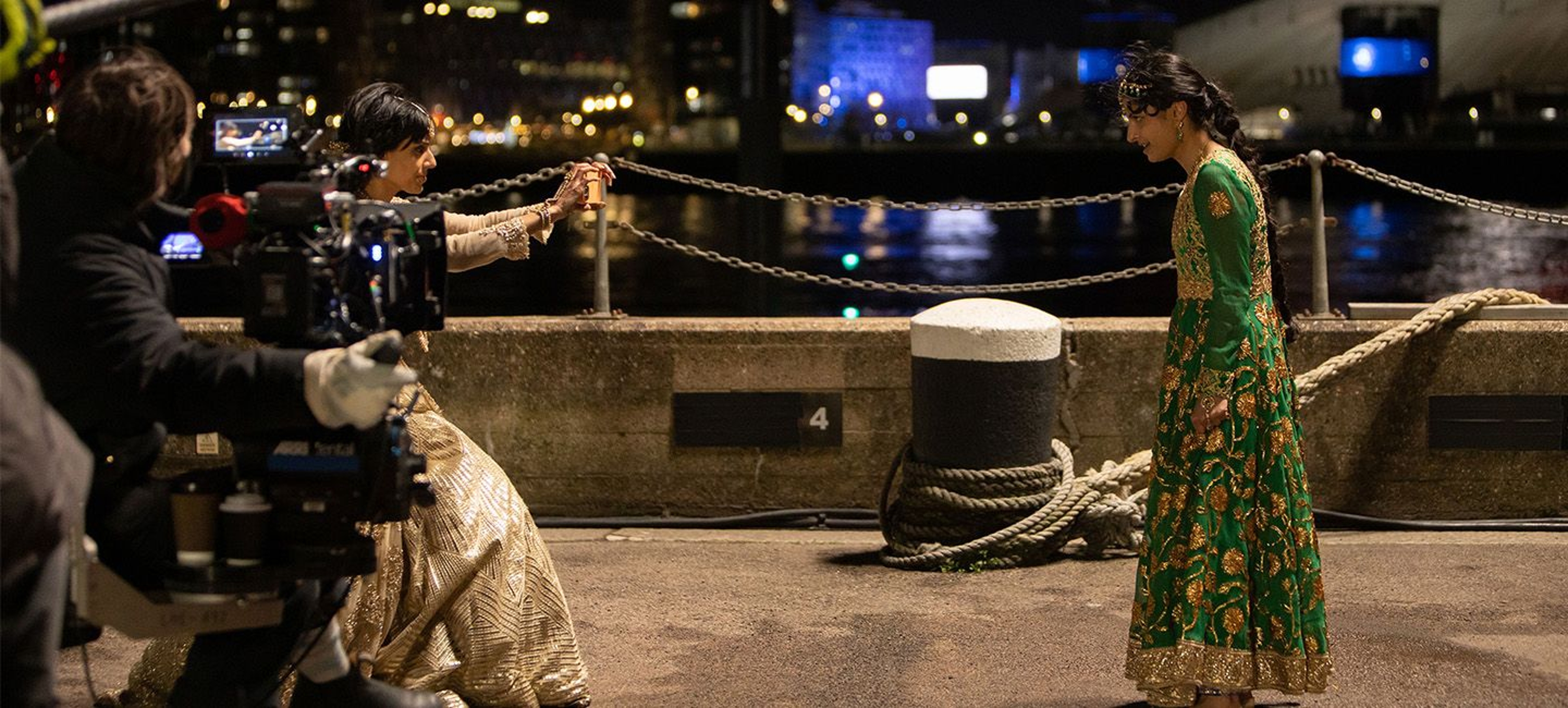When writer and director Nida Manzoor set out to make Polite Society, she knew she wanted the emotionally fraught experience of being a teenage girl to hit as hard in fiction as it does in real life. And she meant literally hit hard—with the emotional highs and lows of love and anger and jealousy and devotion and every other thing crescendoing into full-on combat sequences.
Sisters throw each other through doors and against walls. School bullies toss around their victims like rag dolls. Scheming mothers-in-law become martial-arts masters in the throes of conflict.
In Polite Society, everyone is really feeling their feelings. Hard.
Polite Society official trailer
Manzoor’s new film follows Priya Kansara’s young Ria, a high schooler with two great loves: practicing stunt work so she can one day kick butt in the movies; and her sister, Lena, who supports her dream and helps Priya make fight videos for her YouTube channel. Lena (Ritu Arya) is languishing in a depression spiral when Polite Society begins, coping with malaise after dropping out of art school. But her spirits start to turn when she meets the most eligible rich bachelor (Akshay Khanna) in their close-knit London community. Ria’s jealousy starts to spike as she feels her sister slipping away, but so does her genuine concern when Ria starts to suspect Lena’s dreamy suitor—and his glamorous mother (Nimra Bucha)—are up to something sinister.

Rob Lock, Priya Kansara, Nimra Bucha, Crispin Layfield, and Nida Manzoor on the set of Polite Society.
Polite Society is your friendly neighborhood coming-of-age comedy—just, you know, with some sci-fi twists and interpersonal conflicts that play out more like Kill Bill than they do Mean Girls. And since Manzoor drew as much inspiration from movies by Jackie Chan and Yuen Woo-ping as she did from character studies like All About Eve, that meant linking up with action specialists, such as stunt coordinator Crispin Layfield and fight coordinator Rob Lock, to bring her charmingly brutal vision to life. Because when you think of adolescent drama and a high-tone, traditional Pakistani wedding in England, the first film that comes to mind is the legendarily hard-hitting South Korean drama Oldboy—one of Manzoor’s reference films for the action.
“We’ve all got influences and we all copy what we see, and really in the fights, I just wanted to put 45 years of experience with Nida’s brief and try to show the audience something slightly different,” says Lock, who Layfield called up the same day he told producer John Pocock he would take the job on the film. After one look at the script, Layfield immediately thought, “Oh my God. There are so many fight scenes!” Each one of them would involve a different martial-arts discipline, so Layfield knew he’d need a skilled fight coordinator to come on quickly and get the action-design process going.
Between the two of them, Lock and Layfield have decades of experience, with Layfield working as a stunt pro since 1995 before starting to coordinate in 2006. In that position, he has worked on more than 500 movies and shows. And while Lock only started doing fight coordination in the past decade, he has led a martial-arts academy for over 30 years. Together, the two of them would collaborate with Manzoor, her actors, her costume designer, and their own stunt team to bring each fight to life.
After getting Lock on board, the process started with the coordinator meeting each actor and assessing their abilities. He recalled Arya bringing a confidence with her from recently doing lots of physical work on The Umbrella Academy, and Kansara immediately impressed the stunt team with her eagerness and ability to learn fast. “She’s the best actress I’ve ever seen for wanting to do absolutely everything from day one,” says Lock, who then spent the next six weeks after the actor evaluations designing fight scenes and arranging stunt doubles.

Priya Kansara on the set of Polite Society.
Once that was done, it was several more weeks of bringing the actors back in and breaking each fight down into sections for instruction. Then the stunt team would tailor the choreography to the needs of the scenes and story with Manzoor and her costume designer, PC Williams. Williams amended the garments during the wedding scenes in particular—adding extra fabric for more dramatic movement and building in holes for the wire work—to make clothing as beautiful as it was functional for stunts.
Layfield says that as action in movies has evolved over the course of his career, sequences that used to mostly revolve around “two people having a scrap” now more routinely involve greater emotional complexity, and adding in elements like wire work makes them “a bit more of an art form.” The fights in Polite Society have a rawness to them, because they were built for the actors to do as much on-camera as they could, and because Manzoor wanted them to feel as real as possible—like when Lena and Ria have a knock-down brawl that deepens the growing schism between them.
“I remember Nida’s words for that particular fight: brutal and she’s pissed. She’s angry,” says Lock. Layfield adds that fight choreography was amended to work best with the dialogue, and Manzoor would read through scenes as they rehearsed stunts with doubles to make sure the story was being told as much by the action as the words themselves. “I think people are crying out for something that is a bit more real,” Lock explains, noting the difference between impressive but ultra-glossy films from Marvel and the more rough-and-tumble style of Polite Society. “You can only see somebody zapped across the room, get up, dust themselves off, and keep doing that again and again before it gets a bit boring. There’s so much emotion involved in [the] fights in this.”
